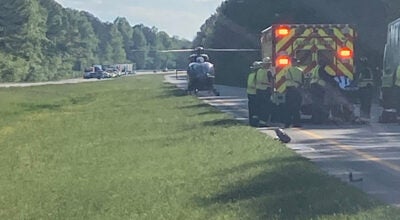River cleanup plan in motion
Published 11:05 pm Friday, May 21, 2010
A handful of citizens showed up to a meeting Tuesday to discuss the quality of the Nansemond River.
The river, Shingle Creek and their tributaries have been on Virginia’s impaired waters list since 1996. They have high levels of bacteria that make them unsafe for shellfishing and recreation such as swimming, according to a study done by the Virginia Department of Environmental Quality.
The DEQ and the Hampton Roads Planning District Commission have developed a plan aimed at bring pollution levels in the river down enough to allow shellfishing and recreation.
Tuesday’s meeting gave area residents a chance to comment on that plan.
Some citizens were concerned that the proposed plan includes no deadlines for targets to be met or consequences for not meeting them.
“There is nothing that holds anyone’s feet to the fire,” said Robert Johnson, a Crittenden oysterman. “There are no hard dates to meet. I have little confidence in this accomplishing anything, and I came hoping you could give me some confidence something would be accomplished.”
The plan involves a number of agencies, including Suffolk and Isle of Wight County, the Hampton Roads Planning District Commission, the Nansemond River Preservation Alliance and several state departments.
Those organizations would seek to control pollution in the river by promoting regular pump-outs of septic tank, by marking storm sewers to that people understand they drain to the river, by improving sanitary sewer systems, by educating residents about proper disposal of pet waste and more.
Proposed actions in the plan include expanding water quality monitoring, establishing a no-discharge zone on the river, implementing a living shoreline program and educating horse owners on proper disposal of manure.
Wilson Browning, who represented the Nansemond River Preservation Alliance at the meeting, suggested putting together a science committee to provide recommendations on what should be done.
“The more information on what’s happening, the better off the public’s going to be,” he said.
He acknowledged, however, that creating the science committee would be unlikely to happen soon, given the state’s current budget situation.
“This is all money, when you get down to it,” he said.
A major problem in the fight against Nansemond River pollution is pinpointing the exact source of the river’s bacteria. Possible causes include wildlife, pet and livestock waste; human waste from failing sewer or septic systems; and agricultural runoff.
“It’s become a river with no sources of pollution that’s polluted,” Browning said. His group is willing to work with the various agencies involved to create a plan, he said.
“We want to cooperate with the city,” he said.
Jennifer Tribo of the Hampton Roads Planning District Commission, responded to concerns about the plan’s lack of deadlines and consequences by calling the it a “starting point.”
“It’s not meant to be a static document,” Tribo said. “We are putting management activities on the ground to improve water quality.”
Public comments on the plan will be accepted through June 18. The plan will be submitted to the state Department of Environmental Quality on June 30.
The plan is available to view at www.hrpdcva.gov/public_notices.asp.






